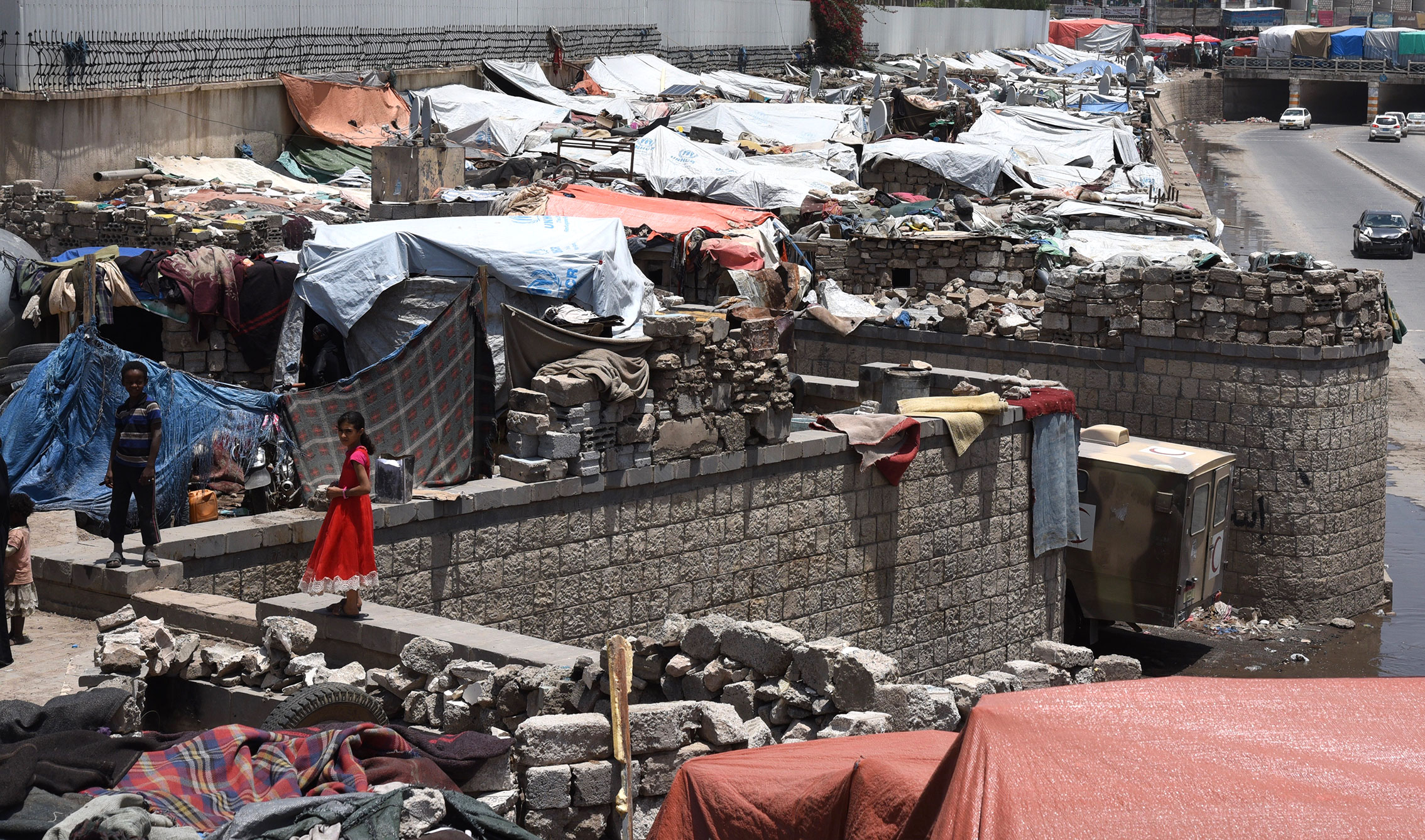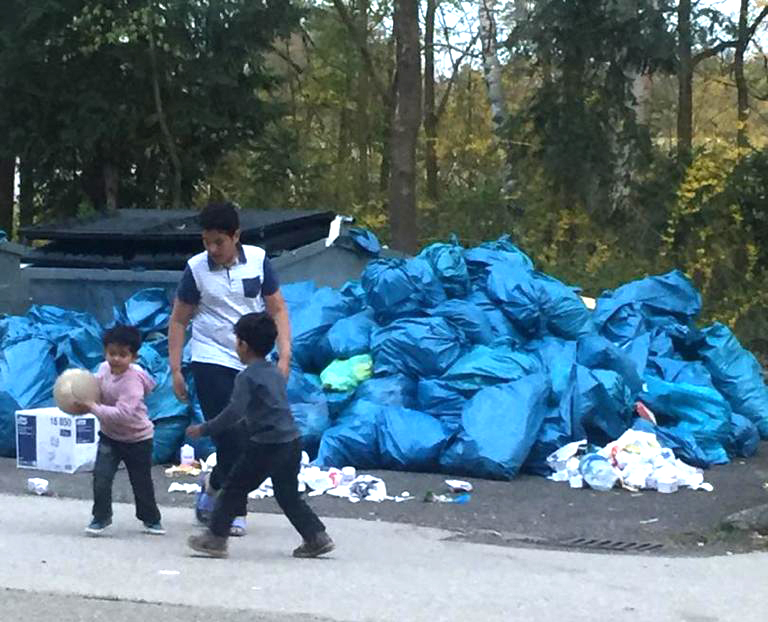
Expert analysis
19 June 2019
The road from Yemen: Part 1
Berlin, Germany: ‘There are no Yemenis in Europe’
This was the most common answer we received when we started looking for Yemeni refugees to interview. Compared with Syrians, Iraqis and Afghans, the number of Yemenis in Europe was negligible, our sources told us. Data seems to back up this claim. UNHCR's portal does not list Yemen among the ten countries producing the most refugees trying to reach Europe, even though it has been anchored stubbornly as a major internal displacement crisis each year since the conflict took a deadlier turn in 2015.
A cursory glance at a map of the region provides hints as to why. The poorest country in the Arab world, Yemen is a peninsula surrounded by the Red and Arabian seas and the Gulf of Aden. The only land borders it shares are with Oman and Saudi Arabia, and the latter has imposed harsh deportation laws and led a military intervention in Yemen that has included repeated attacks on markets, hospitals, schools and other civilian sites. There are simply no safe exits for people to take.
The relatively small number of refugees does not in any way reflect conditions inside the country. Rather it signals a blocked release valve on a toxic pressure cooker. According to the 2019 humanitarian response plan for Yemen, “a higher percentage of people face death, hunger and disease than in any other country”, describing the degree and severity of suffering as unprecedented and shocking. Ten million people are a step away from famine, and a quarter of the population is malnourished.

When we finally located a critical mass of people to interview, in Germany and Greece, we went to talk to them about their initial displacement in Yemen, their journey to Europe, the conditions in which they were living and their aspirations for the future, in order to better understand their most urgent needs and the obstacles they were facing to secure durable solutions. Collectively, the invisible refugees of Yemen – as well as those left behind in unimaginable conditions as internally displaced people – are a marginalised and forgotten group crying out for attention on this year’s World Refugee Day.
“I walked through 12 countries in Europe and then saw my dreams disappear.”
Mo told his story quietly to me at a café in Berlin, all the while nervously picking at a nail on a trembling finger. While still a teenager, Ansar Allah - also known as the Houthi movement - had forcibly recruited him and taken him to Hodeida for training. When he refused to take up arms - “I don’t know how to use a gun and I don’t want to know” - they imprisoned him for six months and administered regular beatings and abuse.
The Saudi-led airstrikes that wrought death and destruction on much of Hodeida brought salvation for Mo. One missile tore a hole in the wall of his prison, through which he and other detainees managed to escape. He fled to Egypt, Iran and then on to Turkey where, unimaginably given his journey so far, “the problems really began”.
Mo found himself one of thousands of refugees and irregular migrants hiring smugglers to attempt the notoriously dangerous Mediterranean crossing to Europe. His boat was intercepted twice, and his smuggler instructed him to toss his passport overboard so he wouldn’t be immediately sent back to Yemen.
On his third attempt he landed on Greek shores and spent nine months on the island of Chios, where “you can’t move, you can’t breathe”. When he was given a travel card to move freely in Greece he went to Athens but found “no future there, just drugs and racism”. So he started walking alone with a backpack and a smartphone map, sleeping in forests and crossing borders at night.
Mo spent 14 months walking through Albania, Montenegro, Bosnia, Croatia, Slovenia, Italy, France, Belgium, the Netherlands and Denmark to arrive to Sweden. He said his worst experiences were in Croatia, where border patrols caught him three times and sent back to Bosnia. The third time, they deliberately damaged his phone and beat him severely. He had to spend three days in hospital for his legs to heal before setting off again.
His hopes for resettlement in Stockholm were shattered when he was intercepted on a train. He realised that because the Greek authorities had taken his fingerprints, he would be sent back to Athens. He left Sweden immediately and made his way to Berlin, where he had been for four months when we spoke.
Sadly, Mo’s journey is similar to those of the other Yemenis we encountered, and they all shared the same ever-present fear of being sent back to Greece. These concerns lead back to the Dublin Regulation, under which people are obliged to apply for asylum in the first EU state to register them.
Not only is the regulation unfair on receiving countries, with France, Germany, Greece, Italy, and Spain receiving more than three-quarters of Europe’s asylum applications in 2018. It is also a source of interminable stress for already traumatised people. Mo’s friend, whose fingerprints were also taken, described the Dublin Regulation as “chaining people to Greece, where there is no future”.
All of the people we interviewed said Berlin was the best place they had been, but living conditions are not without their challenges. Families described life in the transit centres, where poor quality food was only available during strict hours and, with no work available to them, their monthly government stipend of €350 ($390) per family was not enough to get by on.

Many interviewees were suffering visible signs of psychological stress. One father, who was the sole carer for a severely disabled child whose violent seizure delayed the interview, had received no assistance, “not even a wheelchair for my son”, during his first four years in Berlin. The stress of daily life had serious physical effects. He showed us the gold crowns on his teeth, worn down to stubs by incessant grinding.
That didn’t stop him describing the group of families he had brought to talk to us as the lucky ones, the “rich and educated refugees” who had the resources to make it to Germany. “Go to Greece to see the forgotten ones in Europe,” he said.
This blog series is part of a broader project researching the relationship between internal displacement and cross-border movements along the displacement continuum, based on research with the Migration Governance and Asylum Crises (MAGYC) consortium and IDMC’s Invisible Majority thematic series. Part two of this series focuses on the relationship between internal displacement in Yemen and people arriving to Kos, Greece. Read it here. Coming soon will be stories from Djibouti and a thematic discussion of internal displacement issues in Yemen.